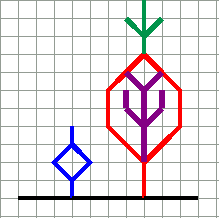

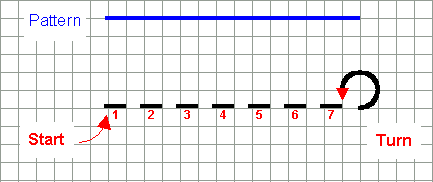
On the return journey, work the "in-between" stitches, ending where you began. The pattern should look the same on the back and the front.
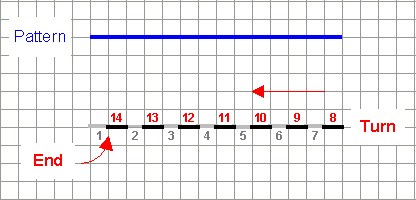
Most (but not all!) blackwork patterns can be worked using the double-running stitch. Look at your pattern and determine the "path" that you want to follow as you work the design. Most patterns will work as one or more journeys with small "side-trips" tacked on along the way.
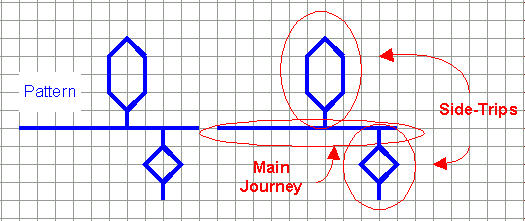
Each side-trip is worked just like
a miniature journey of its own; work all around the element in one
direction, then turn around and work back.
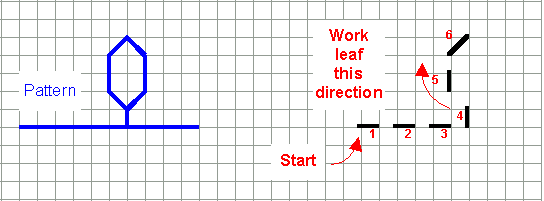
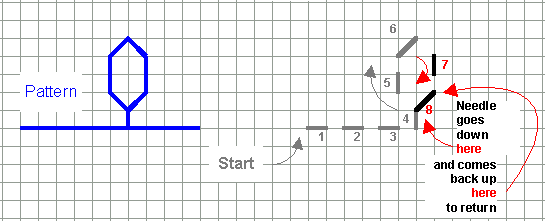
At the end of each side-trip, you should be back where you left your main journey. Pick up the journey and continue on to the next side-trip, and so on.
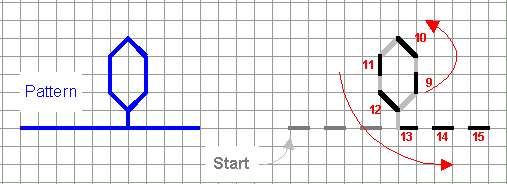
Complex patterns can be broken into side-trips off of side-trips, as shown by the different colors in the pattern below. Work each side-trip as you come to it, branching off and returning to the main pattern.
